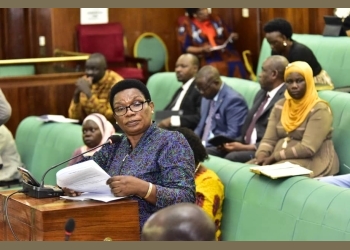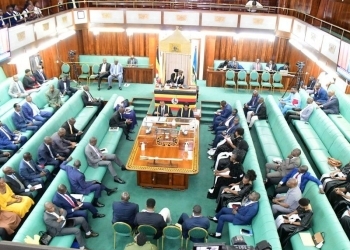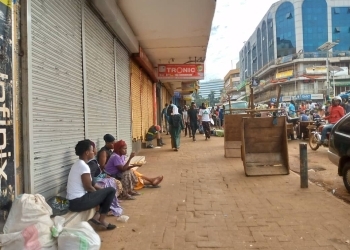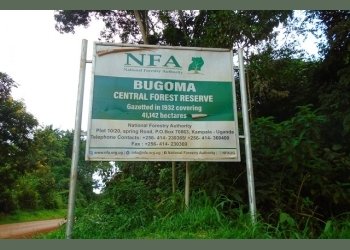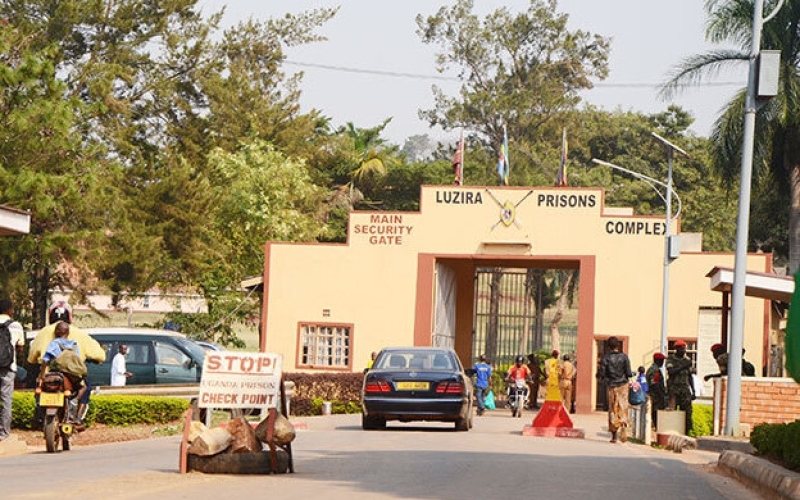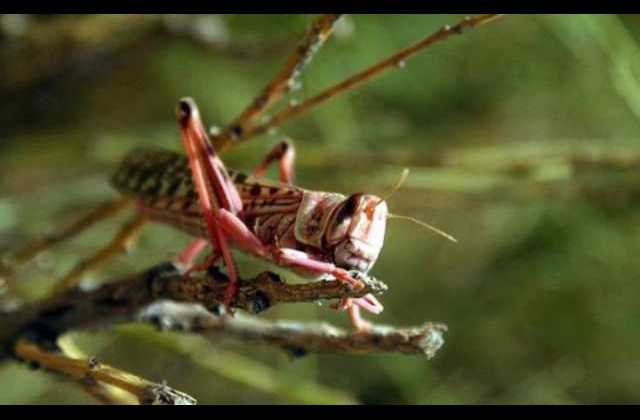
The existing swarms of locusts in Uganda have not caused significant damage to the vegetation cover, the Minister of Agriculture, animal industries and fisheries Hon. Vincent Bamulangaki Ssempija has revealed.
While giving an update on the now less popular subject, the minister indicated that there is an eminent threat to food security when the eggs hatch into hoppers in the next few weeks as has been the case with our neighbor, Kenya.
He explained that swarms of desert locusts (Schistocerca gregaria) continue invading Uganda from neighboring Kenya through Karita and Loroo sub-counties in Amudat District in Karamoja subregion, after having ravaged several parts of Kenya, causing food shortages. The desert locusts have since been sighted in 24 districts in Teso, Lango, Acholi, Sebei and Bugisu subregions.
The affected Districts as of 6th March, 2020 include: Amudat, Nakapiripirit, Nabilatuk, Moroto, Kotido, Kaabong, Karenga, Abim, Otuke, Napak, Katakwi, Amuria, Soroti, Ngora, Kumi, Bukwo, Kween, Agago, Kitgum, Lamwo, Pader, Bulambuli, Bukedea and Sironko.
The swarms however continue to spread to other districts and possibly laying of eggs is expected to continue while our efforts to control the adult locusts continue.
On 3rd March 2020, a new invasion of desert locust (4) square kilometre arrived in Bukwo District covering 3 villages of Ariyowet, Kapambar and Kaptobole in Kapswamatule subcounty. The swarm was a mixture of immature and mature adults and the UPDF immediately swung into action by spraying them. It is worth noting that the immature adult locusts are the most destructive stage of the desert locust as swarms can feed on 100 tons of vegetation per day
Hon. Bamulangaki adds that on 6th of March 2020, the swarm that had settled in Kidepo Valley National Park was seen flying towards South Sudan. “We are in discussions with Uganda Wild Life Authority to begin mapping out areas of desert locusts’ invasions in the National Park for targeted control. This is in line with the preservation of the eco-system in the National Park” he noted
Now, with the planting season round the corner, it is of paramount importance that the desert locust invasions are completely brought under control to avert a potential food crisis.
In response to the invasion, Government in collaboration with key partners has undertaken various interventions to control the desert locusts’ including;
Surveillance teams from Ministry of Agriculture, Animal Industry and Fisheries, respective District Local Governments and Uganda People’s Defense Forces have continued to assess and map out areas where eggs could have been laid by the desert locusts. Maps are being developed to guide the control of nymphs by aerial and ground control.
“Whereas we may not have seen hoppers hatching at the moment, we are reminded that locust eggs remain in the ground for long periods until the weather becomes conducive for them to hatch. As such vigilance must be exercised at all times in areas where the mature locusts have been and this is what the surveillance teams are doing. Through the Desert Locust Control Organization, Government of Uganda is presently involved in trans-boundary desert locust control activities to control the migration of large populations of immature desert locust adults to Uganda” the minister said.
Also, a Surveillance and Reporting Application developed by MAAIF and FAO continues to be used by Extension Workers in the field for timely reporting and maps continue to be generated, ground spraying by the Uganda People’s Defence Forces continues to be undertaken in areas where the desert locusts have been sighted.
Aerial spraying using Fenitrothion 96 ULV was conducted at Napeto, Nakachumti Parish Matany Sub-county Napak District on the 1st of March, 2020. More aerial spraying of desert locusts was carried out at kadonyo, Tapac Sub County in Moroto District. Post spray assessment is being done while more areas for aerial spraying are being assessed and mapped.
Uganda has so far received support from the UN Agencies during implementation of desert locust control interventions. The Desert Locust Control Organization (DLCO) and FAO continue to provide experts who have been helpful in the desert locust control activities. World Food Programme provided fully serviced trucks (5) which are being used for logistics in the control measures.
The minister however says they are facing challenges including the challenge to obtain specialized pesticide formulation for aerial spraying (Fenitrothion 96% ULV) due to the current wave of desert locust outbreaks in the horn of Africa, middle East and the East African region.
“Our original order has been delayed due to strict measures by the Kenya Government which required pre-shipment inspection in Japan which takes 2 (two) weeks. However, the Supplier, Twiga Chemicals has been able to make a partial delivery of 400 Litres awaiting delivery of the full consignment. Kenya is also faced with the same challenge of ready availability of this chemical” Min. Bamulangaki said.



